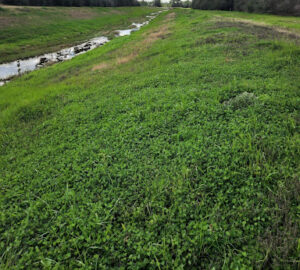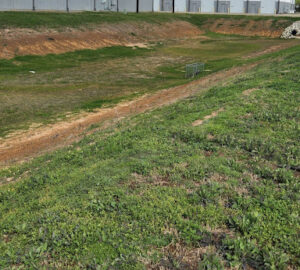 Spring is my favorite time of year in Texas. I think many folks like it for the same reasons as I do. The days get longer, the weather is pleasant, and nature is waking from its slumber (however short it may be!). For many of us, it’s a time to get outside and clean, reorganize, and maintain our properties. It’s also time to assess our yards and flower beds to get them ready for the growing season to come.
Spring is my favorite time of year in Texas. I think many folks like it for the same reasons as I do. The days get longer, the weather is pleasant, and nature is waking from its slumber (however short it may be!). For many of us, it’s a time to get outside and clean, reorganize, and maintain our properties. It’s also time to assess our yards and flower beds to get them ready for the growing season to come.
If you oversee a property with a detention pond in Texas, there are steps you can take to uphold the continued vitality of the grasses and other vegetation that stabilize the slopes. One such step is the application of fertilizer. Now, you might wonder why promoting more growth is necessary. Wouldn’t that result in more frequent mowing? It’s a valid question, considering that a detention pond doesn’t inherently add tangible value to your property. In fact, it might seem like just a hole in the ground, occupying space that could be used for generating income. And while that may be the case, detention ponds play a crucial role in mitigating downstream flooding and are essential components of drainage plans for towns, cities, and counties nationwide, not solely in relatively flat states like Texas. Moreover, there are regulations mandating the proper maintenance of detention ponds, especially if they function as stormwater quality ponds.
Last summer was brutally hot in Texas. This excessive heat for prolonged periods was extremely stressful to vegetation. I myself lost several trees and bushes to the heat and drought and had to water my lawn daily, sometimes multiple times a day! I’m certain that many of you have similar stories. But how does fertilizer mitigate this stress on the grass?
Let me start by clarifying that fertilizers must be applied regularly, at least twice a year, for them to be effective. Establishing healthy grass is a gradual process that unfolds over years, not merely months. The key ingredient here is consistency. The ultimate aim is to cultivate a robust, extensive root system capable of tapping into deeper water reservoirs during our arid, scorching summers. Conversely, unhealthy grasses will develop shallow roots, incapable of effectively accessing deeper water sources. Consequently, they must rely solely on morning dew to meet their hydration needs, which is scarcely sufficient to sustain plant vigor. It’s important to bear in mind that grass is not indigenous to North America, and thus cannot be expected to thrive autonomously like native flora.
The true impact of consistent upkeep becomes apparent during periods of heightened stress, such as the scorching summer we experienced last year. To illustrate this point effectively, I find it best to rely on photographs. Below are images of two adjacent detention ponds, each under different ownership. Interestingly, both ponds lack irrigation and sit on identical soil, eliminating soil composition as a variable for the noticeable differences in their appearance. One of these ponds is owned by Harris County, serving as a regional detention basin. Routine maintenance for county-owned ponds involves monthly mowing, along with seed and fertilizer application twice a year, once in spring and once in fall. In stark contrast, the adjacent property is privately owned and remains unattended. Can you guess which is which?


As evident from the striking contrast, the difference between the two ponds is quite pronounced. However, it’s essential to recognize that neither the deteriorated nor the healthy state of these ponds occurred overnight. What we’re witnessing here is the culmination of years of neglect versus years of diligent maintenance. Unfortunately, the neglected pond deteriorated rapidly due to the extreme heat and drought conditions experienced last year. At this juncture, rectifying the condition of the right-hand pond necessitates costly measures such as regrading and revegetation. If your pond is only beginning to show signs of deterioration, consistent application of seed and fertilizer can often suffice for restoration. Nonetheless, there’s no universal solution applicable to all situations. Accurately determining the necessary course of action requires an on-site evaluation. Feel free to contact us today to schedule a complimentary site assessment. We’ll even provide you with a detailed report, completely free of charge.
